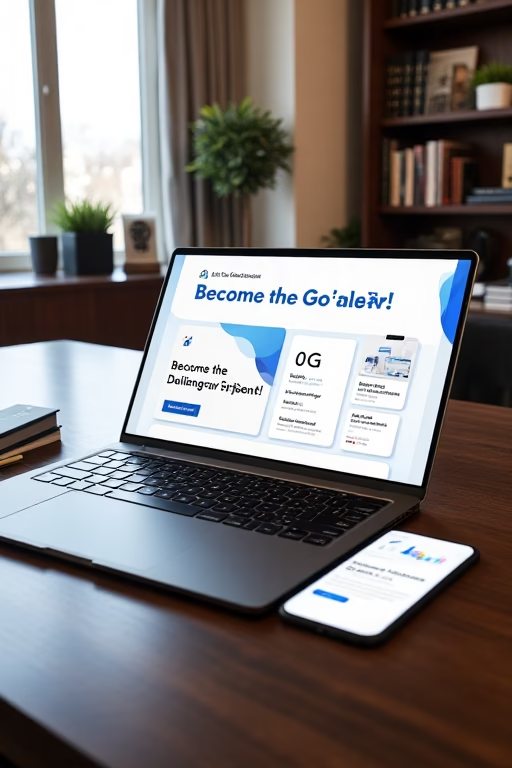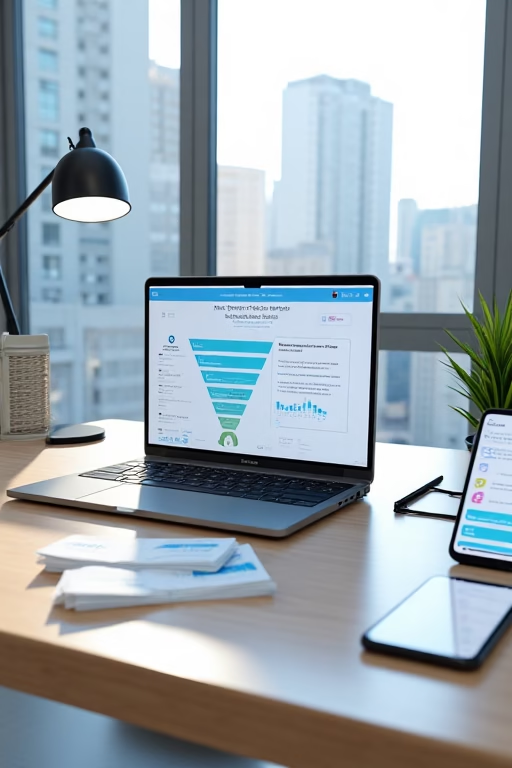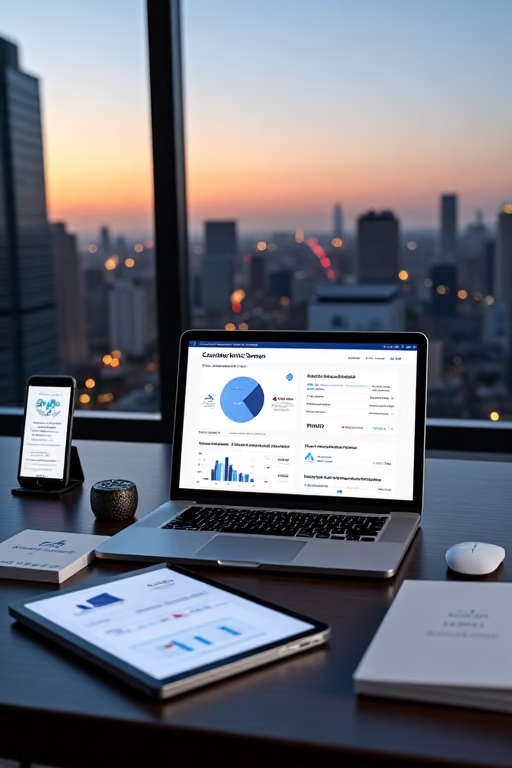How to Sell More Insurance Policies: Converting Leads into Paying Customers
How to Sell More Insurance Policies: Converting Leads into Paying Customers
Your Strategic Sales Guide by Market Wiz
Table of Contents
- Introduction: The Insurance Sales Landscape
- 1. Understanding Your Audience
- 1.1 Demographic Profiling
- 1.2 Needs & Pain Points
- 1.3 Buyer Journey Mapping
- 2. Crafting Compelling Offerings
- 2.1 Packaging Policies
- 2.2 Pricing Strategies
- 2.3 Bundles & Riders
- 3. Lead Generation Strategies
- 3.1 Referral Partnerships
- 3.2 Digital Marketing Channels
- 3.3 Community Outreach
- 4. Optimizing Your Sales Funnel
- 4.1 Landing Pages & CTAs
- 4.2 CRM Integration
- 4.3 Drip Email Campaigns
- 5. Consultative Selling Techniques
- 5.1 Needs Assessment
- 5.2 Objection Handling
- 5.3 Closing Methods
- 6. Digital Tools & Automation
- 6.1 Chatbots & Quizzes
- 6.2 Automated Follow‑Ups
- 6.3 Analytics & A/B Testing
- 7. Building Trust & Social Proof
- 8. Retention & Upselling
- 9. Compliance & Ethics
- 10. Measuring Success & Improvement
- Conclusion & Next Steps
- 25 FAQs
- 25 Extra Keywords
Introduction: The Insurance Sales Landscape
Insurance is about trust, timing, and tailoring solutions. To convert prospects into policyholders, you must understand their unique needs, present compelling offers, and guide them seamlessly through the buying process. In this guide, Market Wiz unveils the complete playbook for selling more insurance policies—online and off.
1. Understanding Your Audience
1.1 Demographic Profiling
Segment prospects by age, income, family status, occupation, and risk tolerance to craft relevant messages and offers.
1.2 Needs & Pain Points
Identify concerns—retirement planning, health coverage gaps, business liability—and position your policies as solutions.
1.3 Buyer Journey Mapping
Map each stage—awareness, consideration, decision—to ensure your touchpoints address questions and reduce friction.
2. Crafting Compelling Offerings
2.1 Packaging Policies
Bundle auto, home, and umbrella policies to create clear value propositions and simplify choices.
2.2 Pricing Strategies
Use tiered deductibles, multi-policy discounts, and flexible payment plans to fit varied budgets.
2.3 Bundles & Riders
Add riders—rental reimbursement, identity theft protection—to tailor packages and boost premiums.
3. Lead Generation Strategies
3.1 Referral Partnerships
Collaborate with realtors, mortgage brokers, and financial planners to exchange referrals and co‑market services.
3.2 Digital Marketing Channels
Run Google Ads for “affordable life insurance,” Facebook lead forms for health plans, and LinkedIn outreach to businesses.
3.3 Community Outreach
Host free insurance clinics at libraries, sponsor local events, and appear on community radio to build goodwill and leads.
4. Optimizing Your Sales Funnel
4.1 Landing Pages & CTAs
Create purpose-built pages for each product—highlight benefits, social proof, and a single, clear call‑to‑action.
4.2 CRM Integration
Sync leads into your CRM to automate follow‑ups, schedule calls, and track conversion metrics.
4.3 Drip Email Campaigns
Deploy timed emails—welcome series, product explainer, case study stories—to nurture leads until they’re ready to buy.
5. Consultative Selling Techniques
5.1 Needs Assessment
Use structured questionnaires to uncover coverage gaps and financial goals.
5.2 Objection Handling
Prepare data-driven responses to price concerns, coverage limits, and complexity fears.
5.3 Closing Methods
Use assumptive closes (“Let’s get your application started”) and trial closes to gauge readiness and prompt action.
6. Digital Tools & Automation
6.1 Chatbots & Quizzes
Deploy chatbots on your site to answer FAQs and a coverage quiz to qualify leads instantly.
6.2 Automated Follow‑Ups
Use SMS and email to remind prospects about quotes, documents needed, and policy benefits.
6.3 Analytics & A/B Testing
Test headlines, calls-to-action, and page layouts to optimize conversion rates over time.
7. Building Trust & Social Proof
Showcase client testimonials, industry awards, and compliance certifications. Publish case studies of claims handled swiftly to demonstrate reliability.
8. Retention & Upselling
Conduct annual policy reviews, offer loyalty discounts, and cross-sell additional coverages—RV, boat, or life riders—to deepen relationships and increase lifetime value.
9. Compliance & Ethics
Adhere to state licensing, disclosure requirements, and privacy laws. Ethical practices build long-term credibility and reduce legal risk.
10. Measuring Success & Continuous Improvement
- Track lead-to-policy conversion rate, average premium, and client acquisition cost.
- Monitor NPS and retention rates to gauge satisfaction.
- Review performance quarterly to refine messaging, targeting, and offers.
Conclusion & Next Steps
Converting insurance leads into paying customers demands a blend of audience insight, compelling packages, optimized funnels, and consultative sales. Start by profiling your ideal client, launching a targeted referral program, and automating your follow-ups this month. With consistent refinement and client-centric service, your policy sales will soar.
25 Frequently Asked Questions
1. What’s the best referral incentive?
Offer gift cards or premium when a referral leads to a new policy.
2. How do I lower client acquisition cost?
Optimize digital ads, leverage referrals, and improve funnel conversion rates.
3. Which CRM suits insurance agents?
Zoho CRM and HubSpot both offer tailored insurance pipelines and automation.
4. How often should I review policies?
Annually, to adjust for life changes and ensure optimal coverage.
5. What digital ads work best?
Google Search for “compare auto insurance” and Facebook Lead Ads for home policies.
6. How to handle price objections?
Emphasize long-term savings, multi-policy discounts, and coverage gaps avoided.
7. Are chatbots effective?
Yes—they qualify leads fast and provide 24/7 assistance on basic queries.
8. How to increase retention?
Offer loyalty discounts, conduct annual reviews, and provide proactive advice.
9. Should I offer free quotes?
Absolutely—free quotes reduce barriers and capture lead information.
10. How many leads convert?
Industry average is 5–10%; optimized funnels can achieve 15–20% conversions.
11. What metrics to track?
Conversion rate, average premium, client lifetime value, and NPS.
12. How to upsell riders?
Bundle explanations into the initial quote and highlight added peace of mind.
13. Can I use social proof?
Display testimonials, star ratings, and case stories prominently on landing pages.
14. How to optimize landing pages?
Use clear headlines, benefit bullets, trust badges, and a single, prominent CTA.
15. Are webinars useful?
Yes—topics like “tax changes and your home insurance” attract engaged audiences.
16. How to segment leads?
By policy type interest, demographics, and engagement level for tailored outreach.
17. What email cadence works?
5–7 emails over two weeks keeps leads engaged without overwhelming them.
18. How to price bundles?
Calculate combined premiums with a 10–15% discount to highlight savings.
19. What compliance rules matter?
State licensing laws, GDPR/CCPA for data privacy, and transparent disclosure standards.
20. How to handle cancellations?
Offer retention discounts, highlight coverage gaps, and propose alternative plans.
21. Should I use retargeting?
Yes—retarget visitors with dynamic ads showcasing the exact policy they viewed.
22. How to manage follow‑ups?
Use CRM reminders and automated email/SMS sequences to ensure timely contact.
23. What’s a good NPS score?
Above 50 is excellent; below 30 indicates room for improvement.
24. How to attract business clients?
Emphasize liability coverage, group discounts, and risk management expertise.
25. What’s the first step?
Create a clear niche statement and update your website’s hero section to reflect it.
25 Extra Keywords
- insurance lead conversion
- auto insurance marketing
- home insurance landing page
- LLC liability coverage
- multi-policy discount strategies
- insurance CRM automation
- chatbot insurance quotes
- insurance drip campaigns
- referral marketing insurance
- insurance content marketing
- insurance social proof
- policy upsell tactics
- insurance retargeting ads
- insurance NPS benchmarking
- CPA vs LLC insurance needs
- commercial insurance outreach
- insurance webinar topics
- insurance compliance tips
- data-driven insurance sales
- online insurance quotes
- insurance premium optimization
- customer retention insurance
- insurance branding strategies
- insurance follow-up automation
- Market Wiz insurance guide
How to Sell More Insurance Policies: Converting Leads into Paying Customers Read More »







